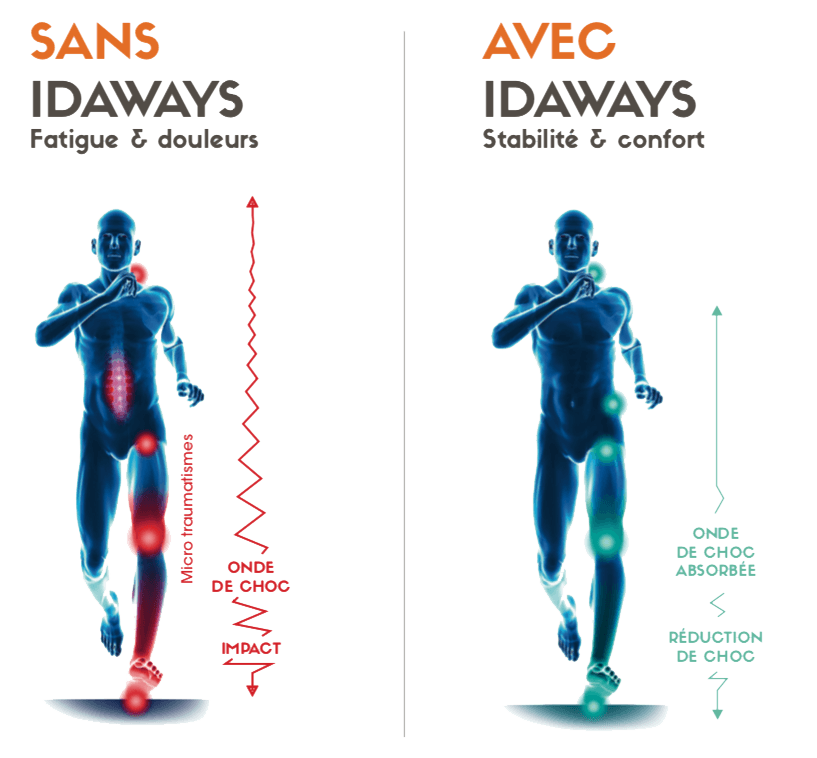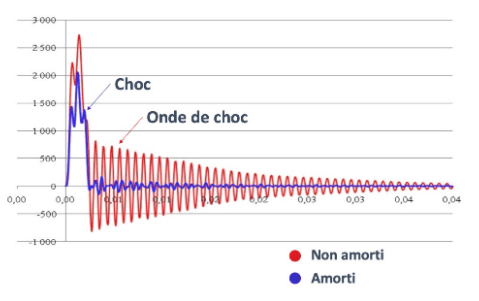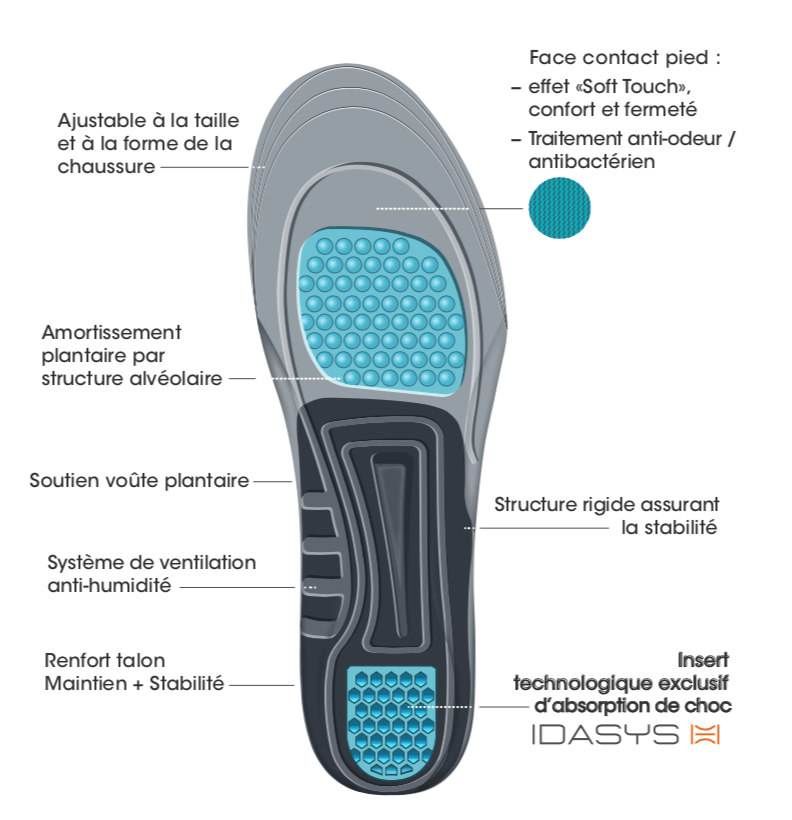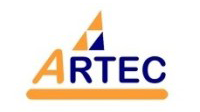
It is important to understand the issues associated with shock waves and instability!
What is:
First of all we must distinguish the instability which has consequences on the joints from that which interacts on the posture of the body with the consequences of back pain.
The first is related to keeping the foot in the shoe. When moving, we can find ourselves on uneven ground (ruts, bumps, roots, curbs, etc.). The foot no longer rests correctly on the ground and if it is not properly held (poorly laced shoes, too large, insufficiently rigid material, poorly adapted shapes at the heel and arch). Trauma can appear either instantly if the effort is violent (twisted ankle, ligament tearing, …), or gradually (fatigue rupture, joint pain, tendonitis, …). This type of trauma can also occur on flat ground, during poor reception following a jump and this in almost all sports.
Instability, with consequences for posture, has its origins in the nature of the materials used in shoes and soles. Indeed, the maintenance of the body is ensured by what we can call “the cerebral gyroscope”. This is a function that modern man has built into him from standing on 2 legs. Information on the position of the body is given by a sensor located in the inner ear which communicates it to the brain which, if necessary, will automatically correct the posture by controlling 300 small muscles of which about 200 are located around the spine. These muscles are only used occasionally.
However, when we are on an unstable system as it can be the case when we use shoes or soles, designed with too soft materials (gel, foam,…), our “brain gyroscope” will activate these muscles permanently. . However, these are not effort muscles like the biceps, triceps, etc., but small muscles to punctually correct our posture. This results in severe muscle pain that is unrelated to athletic activity, but simply results from the instability generated by the flexibility of the materials used in the shoes.
Shock, when walking or running, comes from impact on the ground. The force generated at the time of impact is a function of the moving mass and the speed at the time of impact. On hard ground, almost all of the effort will be passed on to the body. The more flexible the ground, the more this force will be transmitted to the ground. For example, running on wet sand generates an effort which helps the next step, but running on dry sand is very painful because little effort is returned. The impact on the dry sand causes friction between the sand grains which absorbs this energy.
However, in everyday life, most of our travel is done on rigid ground. The shock of the impact of our foot on the ground is not necessarily a problem as long as the effort is not too great. This effort applied to the body is useful, for example, for the calcification of our bones. The impact is most often in the heel.
On the other hand, the shock wave that follows the impact on the ground is a nuisance because it is the cause of many pathologies.
The shock wave depends on the one hand on the level of force applied during the impact on the ground and on the other hand on its duration corresponding to the number of cycles following the initial shock. This number of cycles depends on the damping of the whole “floor + shoes + soles + body”. The greater the damping, the weaker the shock wave.
Synthesis:
Taking these elements into account, to preserve our body, it is necessary that our shoes and soles are:
- Rigid at the heel, while allowing the step to unfold (transfer of support from the heel to the sole of the foot), to allow good stability of the body,
- Cushioned with a high damping coefficient to avoid pathologies such as joint pain (ankles, knees, hips), tendonitis, back pain, etc.
IDAWAYS insoles meet these different criteria and are the only ones worldwide to offer innovative technologies from developments in the aeronautics and space sectors.
IDAWAYS insoles allow:

The attenuation of the shock upon impact on the ground, while retaining a certain restitution of energy to promote the next step

Stability of the body for good posture.

High performance damping to suppress the shock wave and thus protect the body from musculoskeletal trauma
The devices used for IDAWAYS insoles ensure:
- A filtering effect (reduction of the level of shock on impact)
- A damping effect (reduction of the duration / amplitude of the shock wave)

The main function of IDAWAYS insoles will therefore be to considerably reduce the shock waves that wear out the body and the joints on a daily basis, while maintaining optimal stability. Their active principle acts on the mechanical stress undergone by the body and their shape and the maintenance of the arch will guarantee you optimal comfort.
They limit the harmful effects of impact during physical activity and prevent pathologies such as back pain, tendonitis, joint pain, heavy legs (related to shock waves). Its stability reduces general muscle fatigue, irritation of tendons and ligaments.


The majority of existing soles on the market today use the properties of one or more soft materials (foam, gel, etc.) in order to attenuate shocks, but do not correct instability, on the contrary this creates them.
IDAWAYS devices, resulting from IDASYS technology, innovate since they simultaneously provide:
A filtering effect (reduction in the level of shock on impact)
A damping effect (reduction of the duration / amplitude of the shock wave)
A stabilizing effect and good support for the whole foot / ankle / knee
Shock waves from impacts on the ground are at the origin of musculoskeletal disorders (MSDs), whether they are joint pain, tendonitis, back pain, muscle tension or ligament.
To very significantly attenuate these shock waves, it is necessary to use high-performance mechanisms between the foot and the ground.
The shoes or the soles are therefore ideally placed to receive these protective mechanisms. To do this, these mechanisms will have to absorb or convert the dynamic energy of the shock wave.
Today viscoelastic materials convert part of this energy into thermal energy; but to convert all the energy from the impact on the ground, it would require a significant thickness of this material. The other materials have even poorer performance.
IDAWAYS soles attenuate the shock wave very significantly in a reduced thickness and volume.
Thanks to the soles, this static energy will be restored during the transfer of the body’s weight to stimulate the engagement of the next step.
This is why IDAWAYS soles combine good rigidity for good stability, good support with controlled cushioning.


IDASYS is an intelligent dynamic damping technology used in High Technology and applied to consumer goods
IDAWAYS soles are the result of a meticulous assembly of various high-tech shock absorbing devices initially developed for space and aeronautical applications by the company Artec Aerospace led by one of the co-founders of IDAWAYS. They are the first application of IDASYS technology from Artec Aerospace applied to shoes / soles.
Our IDASYS technology is a technology which, associated with millions of specific calculations, allows the optimization of numerous parameters in order to obtain an optimal dynamic damping which suppresses the shock waves while controlling a good posture and a good posture of the body.
Artec Aerospace, having developed and deployed this technology for several decades in the B2B field (Space, Aeronautics, Railways, Nuclear, Automotive …).
Presentation of our IDASYS technology applied to IDAWAYS insoles
Crash test n°3 on 2 elastic plates
One with and one without IDASYS technology
Crash test n°1 on 2 tuning forks
One with and one without IDASYS technology
Crash test n°2 on 2 composite blades
One with and one without IDASYS technology